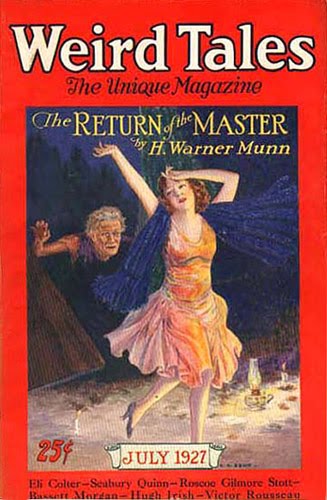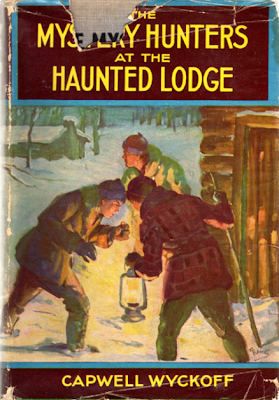Reputed to be a recluse and a shrinking violet, Howard Phillips Lovecraft did a most unexpected thing late in the day on March 3, 1924: he married Sonia Greene and moved to New York City. Lovecraft had met Sonia through their shared interest in the amateur press. (1) By all accounts she was an attractive and vivacious woman. She was also a successful--though perhaps erratic--businesswoman. If he was going to keep up with her, Lovecraft would have to find work (something he had never done before) in the bustling big city (a place he had never lived before). He would also have to share a home and a life with her. In short, he was going to have to live like a normal human being. He proved himself unequal to the task.
Lovecraft was at first enchanted by New York, but by the end of 1924, hard times in the lives of the newly married couple had soured him on the city and his place there. Lovecraft's biographer, L. Sprague de Camp, wrote that "[t]he year and a quarter following Sonia's departure [on the last day of 1924, to work in Cincinnati] was the low point in Lovecraft's life. His depression and misanthropy reached near-suicidal strength, while his behavior showed him at his worst." (2) Sonia returned to the couple's Brooklyn home in February 1925 but left for another job in Cleveland that summer, departing on August 20, her husband's thirty-fifth birthday.
Lovecraft spent a good deal of the year 1925 living as a bachelor. His job-hunting was largely fruitless, yet the year was not wasted. Lovecraft wrote several stories in 1925, including "The Horror at Red Hook," completed at the end of July and published in Weird Tales in January 1927. Set in the Red Hook section of Brooklyn, the story might best be described as a screed. The story "He" followed quick on its heels. Ostensibly fictional, "He" opens with a confession:
Lovecraft spent a good deal of the year 1925 living as a bachelor. His job-hunting was largely fruitless, yet the year was not wasted. Lovecraft wrote several stories in 1925, including "The Horror at Red Hook," completed at the end of July and published in Weird Tales in January 1927. Set in the Red Hook section of Brooklyn, the story might best be described as a screed. The story "He" followed quick on its heels. Ostensibly fictional, "He" opens with a confession:
My coming to New York had been a mistake; for whereas I had looked for poignant wonder and inspiration in the teeming labyrinths of ancient streets that twist endlessly from forgotten courts and squares and waterfronts equally forgotten, and in the Cyclopean modern towers and pinnacles that rise blackly Babylonian under waning moons, I had found instead only a sense of horror and oppression which threatened to master, paralyze, and annihilate me. . . .
A dire situation indeed.
As summer slipped into autumn, Lovecraft had an idea for another story, tentatively titled "The Call of Cthulhu." Although he wrote an outline, the tale itself would have to wait until the following year before being completed. Lovecraft spent the end of 1925 working on an essay, "Supernatural Horror in Literature," a work that would take many more months to complete. By early 1926, he was ready to quit New York and return to Providence. His aunt arranged it, and even Sonia (back from Cleveland) helped him pack, unwittingly participating in her husband's abandonment of their marriage. On April 17, 1926, H.P. Lovecraft arrived by train in the city of his birth. His friend W. Paul Cook described him as "the happiest man I ever saw." (3)
As summer slipped into autumn, Lovecraft had an idea for another story, tentatively titled "The Call of Cthulhu." Although he wrote an outline, the tale itself would have to wait until the following year before being completed. Lovecraft spent the end of 1925 working on an essay, "Supernatural Horror in Literature," a work that would take many more months to complete. By early 1926, he was ready to quit New York and return to Providence. His aunt arranged it, and even Sonia (back from Cleveland) helped him pack, unwittingly participating in her husband's abandonment of their marriage. On April 17, 1926, H.P. Lovecraft arrived by train in the city of his birth. His friend W. Paul Cook described him as "the happiest man I ever saw." (3)
Having never been loved properly, H.P. Lovecraft probably did not know how to love in return. He was also stubborn in his eccentricity, holding onto ways that could only have made his life more difficult. His wife loved him and did much for him. He expressed affection (though not love) in return. But Providence and a decaying household shared with his mother's sisters were home to him. Although the marriage of H.P. Lovecraft to Sonia Greene never legally ended, the couple drifted apart due almost entirely to Lovecraft himself, or as L. Sprague de Camp described it, to his "imp of the perverse."
Lovecraft's unhappy sojourn in New York began on March 3, 1924, and ended with his return to Providence on April 17, 1926. In "The Call of Cthulhu," a story still in outline form at his return, those dates are seemingly combined into a single year, thereby bracketing a crisis for the earth and all of humanity: the resurrection of great Cthulhu.
Next: Biography and "The Call of Cthulhu"-Part 3.
Notes
(1) Sonia H. Greene's story, "The Invisible Monster," was printed in Weird Tales in November 1923. Her future husband had made his debut in the magazine the month before with "Dagon."
(2) Lovecraft: A Biography by L. Sprague de Camp (Ballantine, 1976), p. 244.
(2) Lovecraft: A Biography by L. Sprague de Camp (Ballantine, 1976), p. 244.
(3) Quoted in de Camp, p. 276.
Text and captions copyright 2011 Terence E. Hanley




















